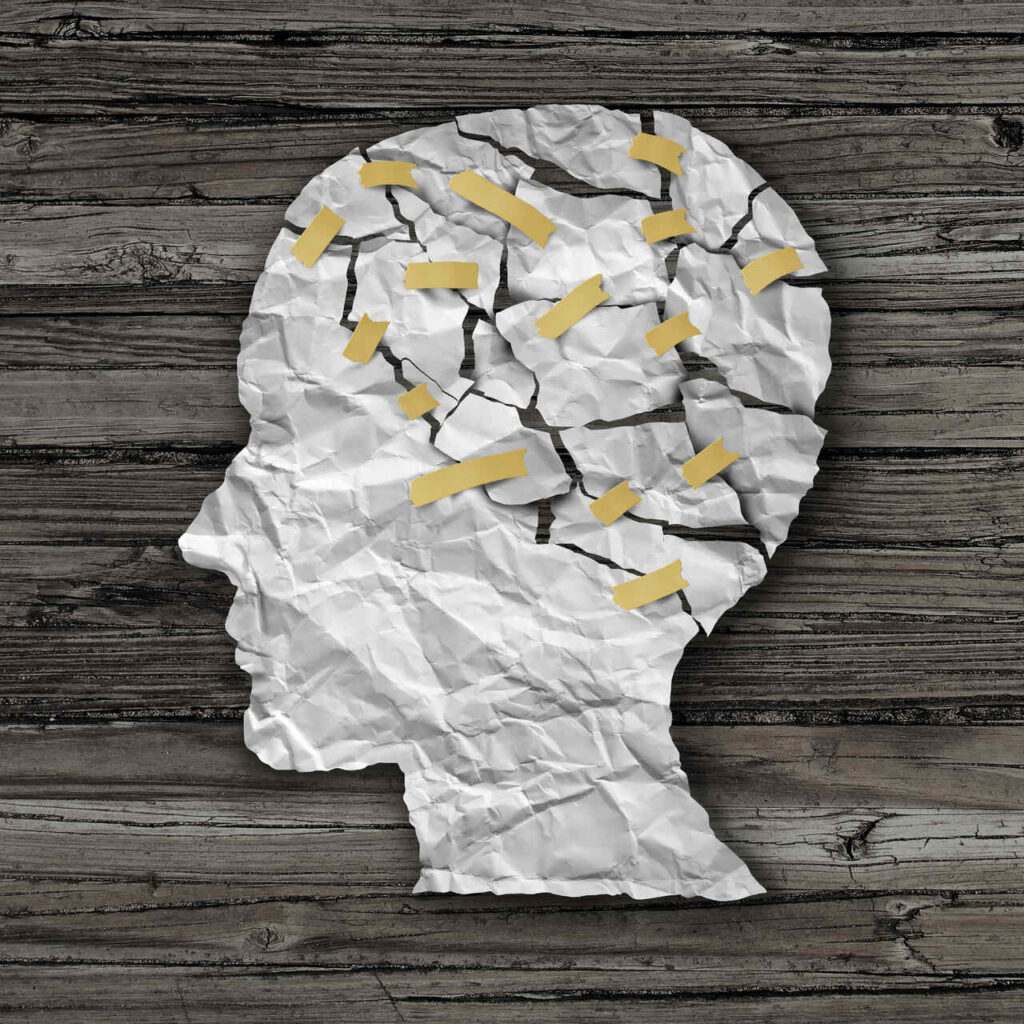Introduction to Psychotherapy for Trauma
Defining Trauma and Its Impact
Trauma refers to a deeply distressing or disturbing experience that can have long-lasting effects on an individual’s mental, emotional, and physical well-being. It can result from various events such as accidents, natural disasters, abuse, loss of a loved one, or witnessing violence. The impact of trauma is significant and diverse, affecting our ability to function daily.
The consequences of trauma can manifest in various ways:
- Emotional Symptoms: Anxiety, depression, guilt, anger, and numbness.
- Physical Symptoms: Fatigue, headaches, digestive issues, and sleep problems.
- Behavioral Symptoms: Withdrawal from activities, difficulty concentrating, and an increased use of substances.
These symptoms highlight the importance of addressing trauma through professional support. Psychotherapy stands out as an essential tool in the healing process, providing the much-needed assistance to navigate and overcome the effects of trauma.
Understanding the Role of Psychotherapy
Psychotherapy, also known as “talk therapy,” is a therapeutic approach where trained professionals use various techniques to help individuals process their experiences, develop coping strategies, and work towards mental and emotional wellness. For those of us coping with trauma, psychotherapy offers a structured and supportive environment to explore and heal from distressing events.
The role of psychotherapy in trauma includes:
- Assessing the individual’s specific needs and tailoring the therapy accordingly.
- Providing a safe space to express thoughts and emotions without judgment.
- Identifying and challenging negative thought patterns associated with trauma.
- Developing coping strategies to manage symptoms.
Various forms of psychotherapy are particularly effective for dealing with trauma. These include Cognitive Behavioral Therapy (CBT), Eye Movement Desensitization and Reprocessing (EMDR), and Dialectical Behavior Therapy (DBT). Each method offers unique techniques and benefits that facilitate the healing process.
Understanding the importance of psychotherapy for trauma can help us make informed decisions about seeking help and embarking on a journey of healing and recovery. Exploring the different types of therapies and their benefits will provide deeper insights, aiding us in choosing the best approach for our needs.
For more information on different psychotherapy options, explore topics like psychotherapy for anxiety, psychotherapy for depression, and psychotherapy for ptsd.
The Therapeutic Process
When navigating psychotherapy for trauma, it’s crucial to understand the therapeutic process. This journey begins with an initial assessment and goal setting, followed by various therapeutic techniques and approaches, and eventually, establishing trust, which is paramount in building a therapeutic relationship.
Initial Assessment and Goal Setting
The initial assessment is the foundation of our therapeutic process. During this stage, we discuss our experiences, symptoms, and concerns with our therapist. The therapist will gather information to understand the nature of our trauma and its impact on our daily life.
In this phase, we also outline goals for therapy. Setting clear, achievable goals helps us track progress and stay motivated throughout the therapy journey.
| Evaluation Criteria | Description |
|---|---|
| Trauma History | Detailed account of traumatic events |
| Symptoms | Identification of symptoms such as anxiety, depression, or PTSD |
| Impact on Life | How trauma affects relationships, work, and daily functions |
| Goals | Short-term and long-term objectives for therapy |
Therapeutic Techniques and Approaches
Several therapeutic techniques and approaches are employed in psychotherapy for trauma. Understanding these methods can help us find the most effective treatment.
Common Techniques and Their Objectives
| Technique | Purpose |
|---|---|
| Cognitive Behavioral Therapy (CBT) | Helps reframe negative thought patterns |
| Eye Movement Desensitization and Reprocessing (EMDR) | Uses eye movements to process traumatic memories |
| Dialectical Behavior Therapy (DBT) | Combines CBT with mindfulness practices |
| Exposure Therapy | Gradual exposure to trauma-related stimuli to reduce fear |
| Narrative Therapy | Encourages us to share our story to gain perspective |
Each of these techniques offers unique benefits, and our therapist will select the approach that best suits our needs. For instance, CBT is widely used to address distorted thoughts related to trauma, while EMDR is effective for processing deeply rooted traumatic memories. Learn more about psychotherapy for PTSD and its various methods.
Establishing Trust and Building a Therapeutic Relationship
A strong therapeutic relationship is crucial for effective therapy. Establishing trust between us and our therapist creates a safe environment where we feel comfortable sharing our experiences.
Elements of a Strong Therapeutic Relationship
| Aspect | Importance |
|---|---|
| Confidentiality | Ensures our shared information is protected |
| Empathy | Therapist’s understanding and validation of our feelings |
| Consistency | Regular sessions help build a continuous rapport |
| Honesty | Encourages open and truthful communication |
By prioritizing these elements, we can foster a trusting relationship with our therapist, making it easier to delve into and process traumatic experiences. This strong bond is essential for us to feel secure and supported throughout our healing journey.
Understanding the therapeutic process provides a roadmap for those of us seeking psychotherapy for trauma. From the initial assessment to employing various techniques, and building trust, each step is designed to guide us through healing and recovery. For more insights on different aspects of psychotherapy, explore our articles on psychotherapy for anxiety, psychotherapy for depression, and psychotherapy for social anxiety.
Types of Psychotherapy for Trauma
Navigating the world of psychotherapy for trauma can be overwhelming. Understanding the different types of therapy available can help us make informed decisions about our mental health journey. Here, we explore three widely used therapeutic approaches: Cognitive Behavioral Therapy (CBT), Eye Movement Desensitization and Reprocessing (EMDR), and Dialectical Behavior Therapy (DBT).
Cognitive Behavioral Therapy (CBT)
CBT is a structured, time-limited therapy that focuses on the relationship between our thoughts, feelings, and behaviors. The goal is to identify and challenge distorted thought patterns that contribute to our distress and replace them with more adaptive ones.
Core Components of CBT:
- Identifying negative thought patterns
- Challenging cognitive distortions
- Developing problem-solving skills
- Exposure to feared situations
CBT is highly effective for treating trauma-related conditions, including PTSD, anxiety, and depression. For more information on CBT and its application to other conditions, visit our articles on psychotherapy for anxiety and psychotherapy for depression.
Eye Movement Desensitization and Reprocessing (EMDR)
EMDR is a specialized therapy designed specifically to help us process traumatic memories. It involves guided eye movements while recalling distressing events, helping to desensitize the emotional impact of these memories.
Key Elements of EMDR:
- History taking and treatment planning
- Preparation and education about EMDR
- Desensitization through eye movements
- Installation of positive beliefs
EMDR has shown significant success in helping individuals with PTSD and other trauma-related disorders. To explore other therapies for PTSD, check out our detailed article on psychotherapy for ptsd.
Dialectical Behavior Therapy (DBT)
DBT combines cognitive-behavioral techniques with concepts from mindfulness and acceptance practices. Initially developed for treating borderline personality disorder, DBT is effective in addressing emotional dysregulation and trauma.
Components of DBT:
- Mindfulness: Enhancing awareness and acceptance of the present moment
- Distress Tolerance: Building skills to tolerate and survive crises
- Emotion Regulation: Learning to manage and change intense emotions
- Interpersonal Effectiveness: Improving relationships through effective communication
DBT is particularly helpful for those who struggle with intense emotions and self-destructive behaviors. It is also widely used for various mental health conditions, including anxiety, depression, and self-esteem issues. Learn more about its applications in our articles on psychotherapy for self-esteem and psychotherapy for social anxiety.
| Therapy Type | Focus | Key Components |
|---|---|---|
| Cognitive Behavioral Therapy (CBT) | Challenging negative thoughts and behaviors | Identifying distortions, problem-solving, exposure |
| Eye Movement Desensitization and Reprocessing (EMDR) | Processing traumatic memories | Eye movements, desensitization, positive beliefs |
| Dialectical Behavior Therapy (DBT) | Emotional regulation and mindfulness | Mindfulness, distress tolerance, emotion regulation |
Understanding these therapeutic approaches helps us choose the best path toward healing and recovery from trauma. By exploring these options, we can find a therapy that resonates with our needs and facilitates our journey to well-being.
The Healing Journey
Navigating the path of psychotherapy for trauma, we embark on a profound healing journey. It’s an intricate process that involves processing traumatic memories, building coping strategies, and experiencing both progress and setbacks.
Processing Traumatic Memories
Trauma leaves lasting imprints on our minds. Processing these memories is an essential part of psychotherapeutic healing. Various therapeutic techniques help us to safely confront and integrate these experiences.
One method involves revisiting the traumatic event in a controlled environment. This allows us to reframe negative thoughts and reduce their emotional impact. Another method is Eye Movement Desensitization and Reprocessing (EMDR), which helps by accessing and processing trauma-related memories.
| Method | Description |
|---|---|
| Revisiting the Traumatic Event | Controlled confrontation of traumatic experiences |
| EMDR | Reprocessing trauma through guided eye movements |
Coping Strategies and Skills Building
Developing effective coping strategies is crucial for managing trauma. These skills help us to navigate daily life and reduce emotional distress. Cognitive Behavioral Therapy (CBT) often focuses on building these techniques.
We might learn deep breathing exercises, mindfulness practices, or grounding techniques. These tools can assist in managing anxiety, panic, or emotional overwhelm. For more coping strategies related to anxiety, visit our article on psychotherapy for anxiety.
| Strategy | Purpose |
|---|---|
| Deep Breathing | Reduces anxiety |
| Mindfulness | Enhances present moment awareness |
| Grounding Techniques | Alleviates panic attacks |
Progress and Setbacks
The journey through psychotherapy is not linear. We will inevitably experience both progress and setbacks. Progress might manifest as reduced anxiety, improved sleep, or better emotional regulation. However, setbacks, such as heightened anxiety or resurfaced memories, are also part of the process.
It’s important to recognize that setbacks do not signify failure. They are opportunities for growth and reflection. Working with our therapist, we can adjust our goals and strategies. For example, setbacks in managing anger might lead us to explore psychotherapy for anger management.
| Phase | Indication |
|---|---|
| Progress | Reduced anxiety, better sleep |
| Setbacks | Heightened anxiety, resurfaced memories |
This healing journey is an ongoing process that respects our unique experiences and timelines. Through understanding traumatic memories, building effective coping mechanisms, and navigating inevitable setbacks, we pave the way toward recovery. The shared experience of psychotherapy for trauma is a testament to resilience and growth.
Self-Care and Support Systems
Having the proper support systems in place is essential when navigating psychotherapy for trauma. Self-care, support from loved ones, and community resources can collectively help us manage the emotional and psychological demands of therapy.
Importance of Self-Care During Therapy
Self-care is a crucial component of the healing process. Engaging in regular self-care practices helps us build resilience and enhances our ability to cope with the emotional challenges that arise during therapy. This can include physical activities, relaxation techniques, creative outlets, and maintaining a balanced lifestyle. Here are some effective self-care practices:
- Physical Activity: Regular exercise can help reduce stress and improve mood.
- Healthy Diet: Proper nutrition plays a role in physical and mental well-being.
- Mindfulness and Meditation: These techniques can improve focus and reduce anxiety.
- Creative Expression: Engaging in hobbies like drawing, writing, or music.
Seeking Support from Loved Ones
Support from family and friends is invaluable during the therapeutic journey. Open communication with loved ones can create a network of emotional support, making it easier to navigate the ups and downs of therapy. Sharing our experiences with those we trust can provide a sense of comfort and understanding.
Here are some ways to seek support from loved ones:
- Share Therapy Goals: Discussing our therapy goals with family can help them understand our journey.
- Seek Encouragement: Loved ones can offer words of encouragement and motivation.
- Create a Supportive Environment: Ensuring that our home is a safe and supportive space.
Utilizing Community Resources
Community resources can offer additional support outside of therapy sessions. These resources can include support groups, mental health organizations, and public services that cater specifically to individuals dealing with trauma. Utilizing these resources can help us find a sense of belonging and further aid in our healing journey.
Here are some community resources to consider:
| Resource Type | Description |
|---|---|
| Support Groups | Groups where individuals share experiences and support one another. |
| Counseling Services | Additional counseling services, often available at low cost or free. |
| Mental Health Hotlines | Immediate support in crisis situations. |
| Workshops and Seminars | Educational programs focusing on trauma and recovery. |
Utilizing these resources can greatly enhance the impact of psychotherapy for trauma, leading to more comprehensive and sustained healing. For additional support on related issues, explore articles like psychotherapy for grief and loss and psychotherapy for stress management.
Moving Forward
Gradual Transition and Preparation for Closure
As our therapy sessions progress, it becomes essential to gradually transition and prepare for closure. This phase involves a collaborative approach where we, along with our therapist, reflect on the journey and evaluate the progress made. It is important to set realistic expectations and recognize that the transition out of therapy does not imply an end to the healing process. Our therapist may assist us in creating a plan that includes strategies for maintaining our progress and managing potential challenges independently.
| Transition Strategy | Description |
|---|---|
| Review and Reflect | Discuss and review goals, achievements, and progress |
| Develop Coping Strategies | Establish techniques to manage stress and setbacks |
| Plan Regular Check-Ins | Schedule future sessions as needed to ensure support |
| Set Future Goals | Identify long-term goals to stay focused on recovery |
Reflecting on Growth and Resilience
Reflecting on growth and resilience is a crucial part of our therapeutic journey. It involves acknowledging the strengths we’ve developed and the obstacles we’ve overcome. This reflection can foster a sense of accomplishment and reinforce our ability to handle future adversities. We may keep a journal to document our progress and revisit it during challenging times to remind ourselves of the resilience we’ve built.
Here are some key areas to reflect on:
- Personal Strengths: Recognizing qualities and skills we’ve developed.
- Overcoming Challenges: Identifying specific instances where we’ve successfully managed difficult situations.
- Emotional Growth: Noting improvements in emotional regulation and self-awareness.
- Enhanced Relationships: Observing how our relationships have evolved and strengthened.
Continuing the Path to Healing
Continuing the path to healing involves integrating the skills and insights we’ve gained from therapy into our daily lives. This ongoing process may include practicing self-care, utilizing coping mechanisms, and seeking support when needed. It’s important to remember that healing is not linear, and setbacks are a natural part of the journey. By maintaining a proactive approach to our mental health, we can sustain the progress we have made and continue to grow emotionally and psychologically.
For additional support, consider exploring these related topics:
- Psychotherapy for stress management
- Psychotherapy for anxiety
- Psychotherapy for depression
- Psychotherapy for ptsd
- Psychotherapy for relationship issues
By viewing our healing journey as an ongoing process, we empower ourselves to continue making positive changes and embrace the resilience we’ve cultivated. Let us remain committed to our well-being and continue to seek growth and healing with confidence and determination.














